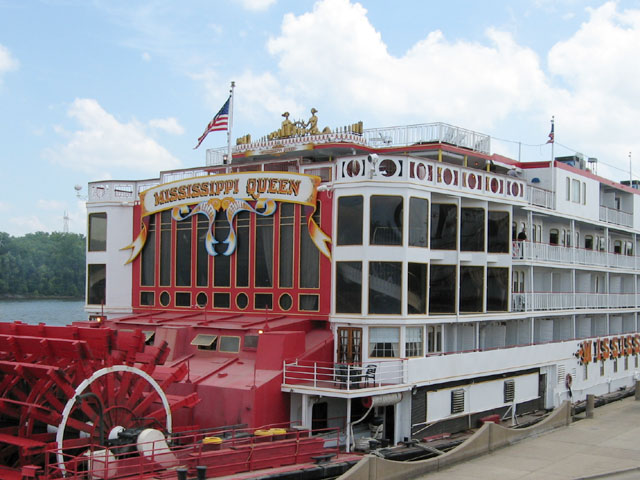A Cultural Icon: The History of the Mississippi River Steamboat
Imogen Reed, guest contributor
Nobody questions the majestic quality of America’s greatest river. Madam Mississippi is a commanding force, travelling over 3,500 km and responsible for the settlement and development of the US’s most vibrant and cultural interesting cities and communities. A powerful life force and the fourth longest river on the whole planet, the Mississippi has been used historically for trade, transport and even as a home for some. The development of the steamboat may have begun elsewhere but these fantastic vessels, which still run to this day, are known for their presence in the Great River.
Nineteenth Century Engineering
Long before the need for boat insurance, liability cover and all the bureaucratic necessities that now surround the development and costing of a new ship or product design, the steamboat was invented 1803 by Pennsylvanian engineer Robert Fulton but Fulton’s vessels were not meant for the Mississippi River.
The New Orleans – the first Mississippi River steamboat
It was a few years further into the 19th century that the revolution upon the Mississippi occurred. River commerce had been revolutionised by Fulton’s development and the first steamboat to take to the choppy waters of the Great River was the New Orleans in January 1812. Designed and built in Pittsburgh for the huge expensive of $40,000 her maiden voyage was shocked by a series of unexpected nonvolvanic earth tremors, listed as the worst in American history. However, she prevailed and arrived in the city of her namesake by January 12th of the same year.
The Enterprise – a new design in steamboats
The golden age of the steamboat was upon the Mississippi’s banks and the next ship of note came in the form of the famous Enterprise. The fourth of the river’s great boats was a huge development from the original Fulton design featuring a highly pressured steam engine, a shoal draft and just a single stern paddle wheel. She was specifically designed for use upon the Mississippi and was designed and developed by Daniel French, who described himself as a mechanician rather than engineer.
The Industry Spreads and Develops
In 1814, there had only been 21 steamboat arrivals in the city of New Orleans but by 1819 this number had risen to 191 and within another fourteen years in 1833 more than 1,200 steamboats reached the city, unloading their cargoes and continuing along their way. Integral to the development of the area and local trade, steamboats were essential.
It wasn’t until 1830 that the industry spread its wings and moved further towards the upper Mississippi and just ten years later river commerce was a major force between the city of St. Louis and the navigation headquarters at St. Anthony’s Falls.
At this time, steamboats were mainly considered working vessels, solely for trade use but in time they all incorporated comfortable passenger accommodation. They played a key role in providing essential amenities during the Civil War and allowed for speedier travel, cutting the journey from Louisville to New Orleans from 20 days to just 6. Although travelling by steamboat was by no means considered a safe bet, it was much preferred to many of the alternatives, especially given the time difference.
The Emergence of the River Showboat
In an area rich in cultural diversity and with a keen love for the arts, the development of showboats was an absolutely sensational idea. From the mind of British actor William Chapman, the first showboat was simply named the Floating Theater and was invented in 1831. Aboard the ship, Champan and his theatrical family performed plays, shows and songs at chosen stops along the waterway. Admission prices weren’t set and could vary depending on where they went and it became extremely popular. By 1837 the Chapman family had a new vessel, fully equipped and renamed their project the Steamboat Theatre. Of course, showboating was effected by the Civil War but by 1878 when vaudeville was becoming hugely popular, the showboats returned and added a touch of excitement and lavish theatre to the Mississippi’s trade atmosphere.
Modern Steamboats and the Mississippi River
Of course, a river cruise along the Mississippi is a scenic and one in a lifetime opportunity that all in the area should partake in. Touring the Great River Road is possibly on a range of vessels in the modern age but a traditional steamboat is by far the most authentic and enjoyable way of travelling between destinations and taking in everything about the diverse and exciting area that has been born out of the Great River herself.


My feelings are similar from my service aboard the Steamers DELTA QUEEN and MISSISSIPPI QUEEN, 1978-1980 and 2006.